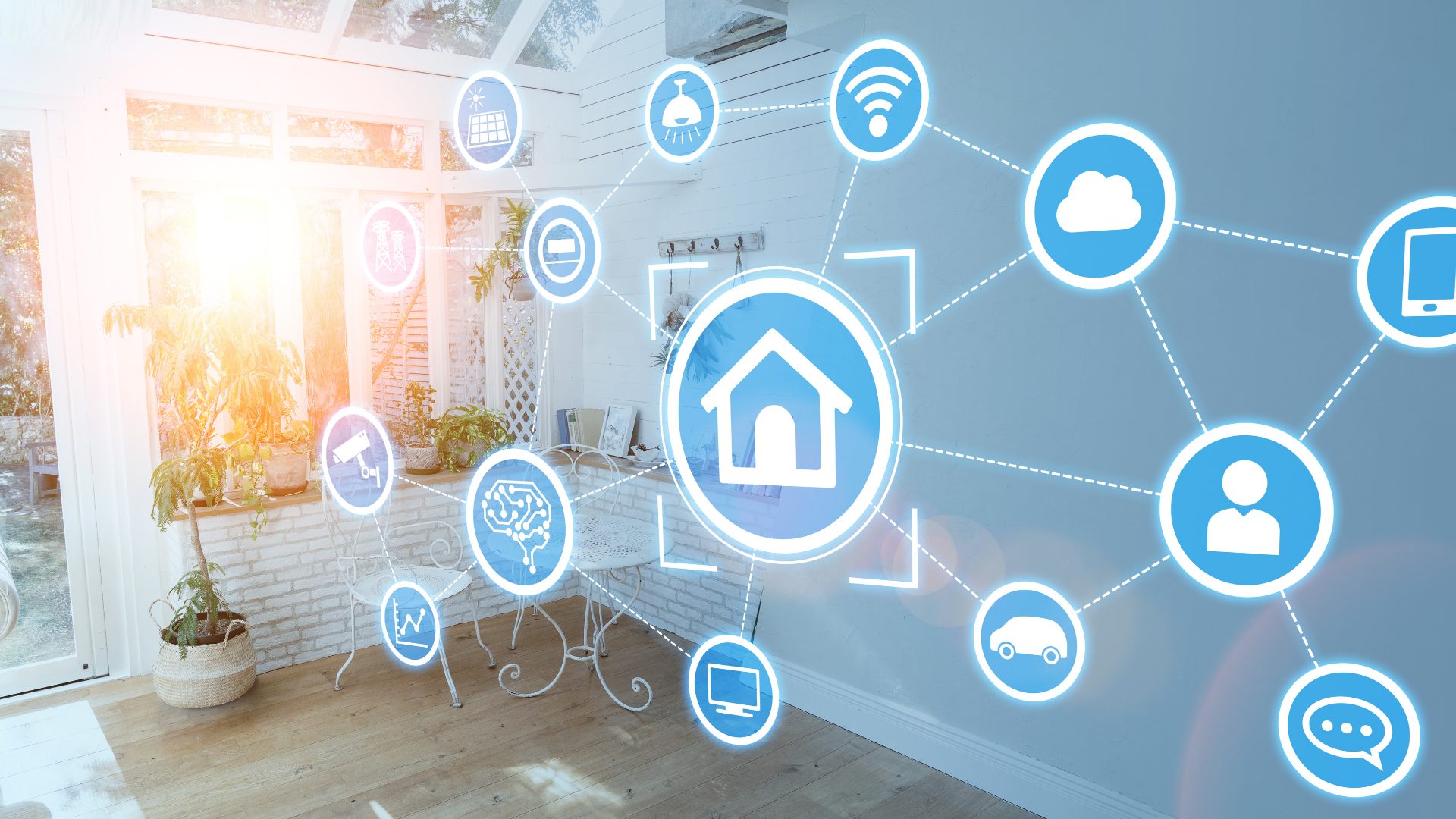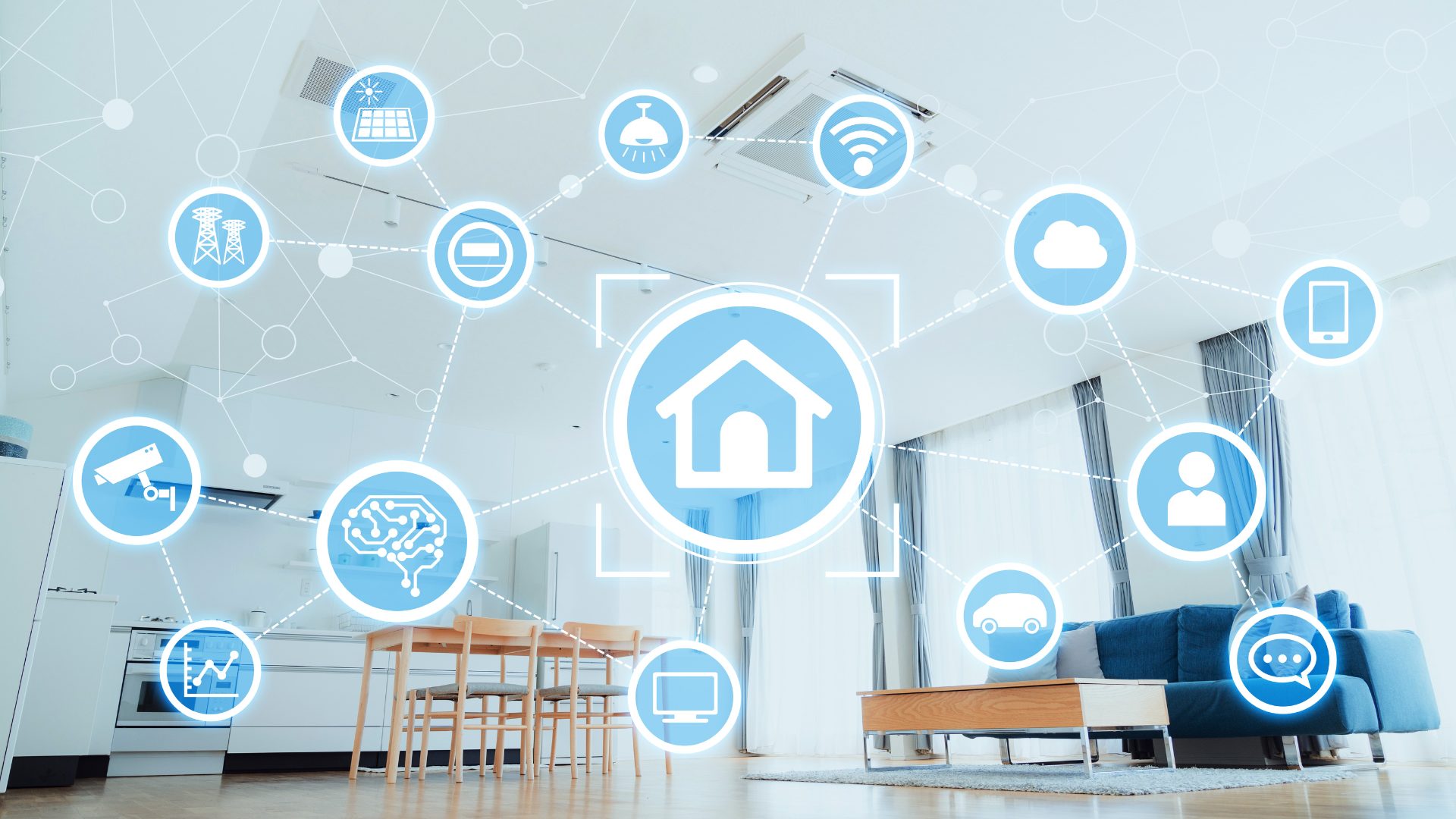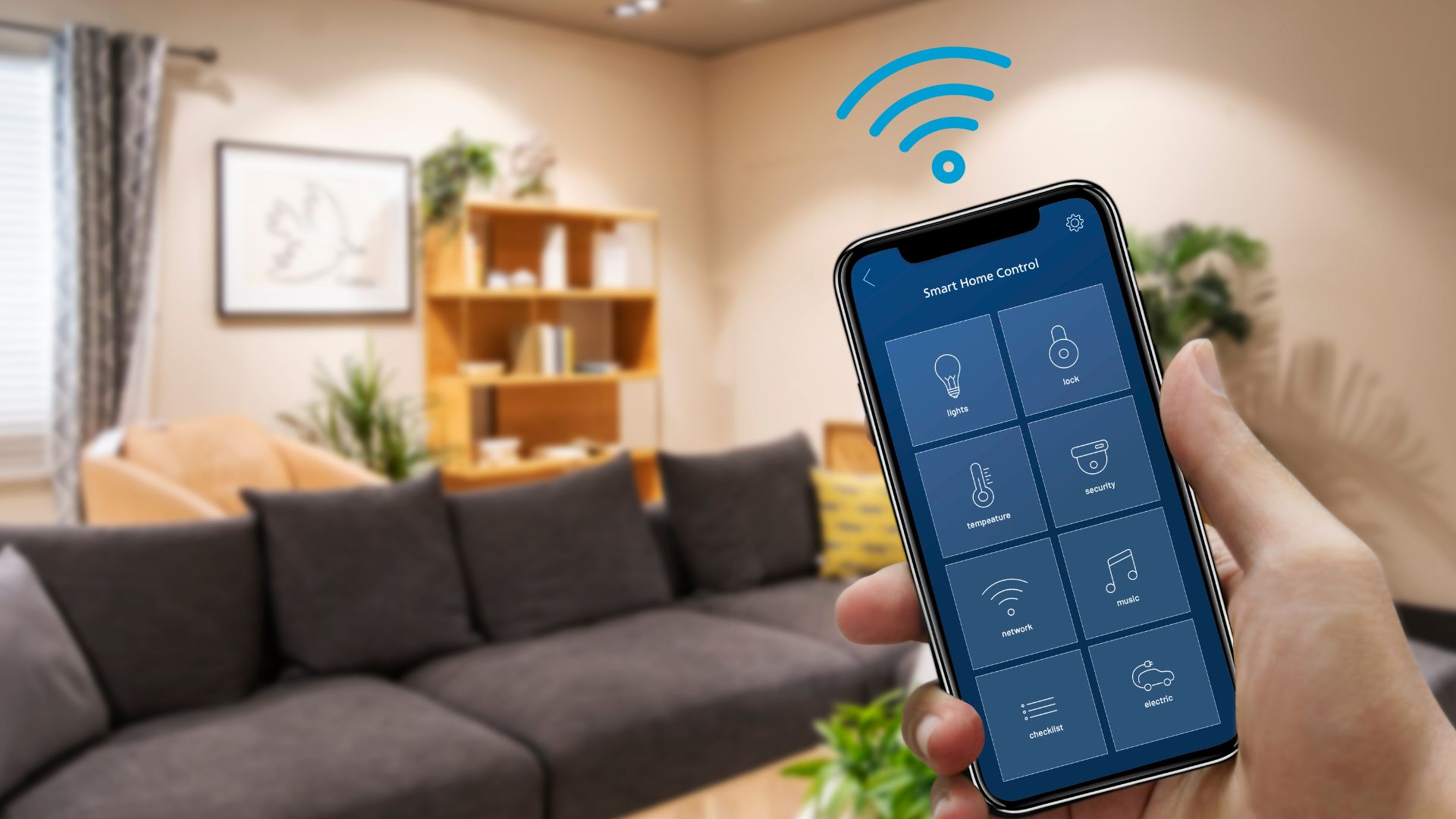Building a Smart Home: A Simple Guide
Welcome to the world of smart homes! Imagine controlling lights, temperature, and security with just your voice. Sounds like a scene from a sci-fi movie, right? Well, it’s real with smart home technology. These homes use internet-connected devices to make life easier. You can adjust your home’s lighting or monitor security from anywhere. The magic happens through smart home devices like Google Assistant or Amazon Alexa.
Selecting the right home devices ensures a smooth experience. Whether it’s smart speakers or thermostats, they all play a part. Integrating these smart home systems can save energy and time. And the best part? Smart home appliances learn your habits for even better efficiency!
Key Takeaways
-
Smart homes offer convenience, energy savings, and security with internet-connected systems.
-
Choosing compatible smart home devices ensures seamless integration and smoother operation.
-
A stable Wi-Fi network is crucial for integrating smart home systems effectively.
-
Smart building automation can streamline daily tasks using routines like IFTTT.
-
Future smart home technology trends include unified standards for better device compatibility.\

Understanding Smart Home Technology
Grasping the nuances of smart home systems involves more than just purchasing the latest gadget. Imagine your space transforming subtly as you integrate connected systems into your daily routine. Picture your room lights dimming as the movie starts, or your thermostat adjusting because it senses no one is home. Smart home technology is about orchestrating these small moments to make life smoother.
Are you considering a switch to smart home appliances? Think about the systems that will blend seamlessly with your lifestyle. Devices that chat with each other can be a game-changer. For instance, your Google Assistant could manage your morning routine without breaking a sweat.
But don’t overlook the essentials like strong Wi-Fi or reliable power sources. No one wants a smart home that goes dark during a power outage! Smart-home devices should enhance, not complicate, your life. A smart building might sound futuristic, but it starts with the simple choice of choosing the right smart home devices.
A robust smart home application can tie everything together, providing remote access and control. This kind of integration opens up endless possibilities. From basic lighting controls to sophisticated security systems, the choice of home appliances can define your smart home experience.
Now, what’s your next step in building a smart home?

Benefits of a Smart Home Setup
The perks of constructing a clever home setup are immense. Imagine your smart home adjusting its temperature as you step in. Or the lights dimming just as you cozy up on the couch. These aren’t just dreams; they’re the reality of smart home systems!
-
Convenience: With smart home devices, control is at your fingertips or a voice command away. Whether it’s adjusting the thermostat or checking who’s at the door, it’s all seamless.
-
Energy Efficiency: Automated systems can save energy by turning off lights or adjusting climate controls when no one is home.
-
Safety and Security: Cameras and sensors offer peace of mind, alerting you to any unusual activity.
-
Remote Monitoring: Check on your home from anywhere. Going on vacation? Your smart building has your back.
-
Ease of Use: Voice assistants like Google Assistant make life simpler. Just say the word, and your smart home technology responds.
-
Customization: Tailor settings to fit your lifestyle. Set routines for waking up or bedtime.
-
Future-Ready: As tech evolves, your smart home application can adapt, ensuring longevity.
-
Integration: Connect various home appliances for a cohesive experience, making your home truly smart.

Choosing the Right Smart Home Devices
When it comes to picking the best devices for your smart home, think about which gadgets fit your needs and lifestyle. The right gadgets will fit seamlessly into your smart home systems. Pick the ones that connect easily with your chosen ecosystem, like Google Assistant or Amazon Alexa. Start by considering the devices you use most often, like lights or thermostats.
Next, think about your home’s size. Bigger homes might need a mesh Wi-Fi system for smooth connections. A stable network is the backbone of a smart building. For those interested in extending their living space, I shared about granny pods in another article.
Safety is key, so look for gadgets with encryption and frequent updates. This keeps your smart home devices secure. Maybe you’re a fan of tech and want the latest in connectivity. If so, check out Simon Hill’s thoughts on Twitter for more insights.
Lastly, remember, a smart home application can simplify life. Automate chores with ease. From waking up to winding up the day, smart-home devices are there to help. Choose wisely, and your home will be both cozy and smart!
Integrating Smart Home Systems Seamlessly
Simplifying the integration of smart-home systems requires attention to a few key areas. First, let’s tackle your network. A stable Wi-Fi network, ideally 2.4 GHz, is crucial for smart building devices. If you’ve got a big house, a mesh Wi-Fi system can help cover all corners. Device names should be clear and consistent. This aids in smooth voice command execution and automation.
Now, speaking of voice control, using Google Assistant can make life much easier. It knows your commands like a pro, turning your house into a responsive companion. Just imagine, a simple “Hey Google” and your world changes.
Choosing the right gadgets is like picking the right team for a game. They must play well together. With so many options, stick to compatible ones. This makes your life easier, trust me.
And hey, if you’re curious about future changes and how they might shake things up, have a look at this insightful piece I wrote. A sneak peek into the future is always fun, right?
Incorporating these steps ensures your tech-savvy dwelling runs like a well-oiled machine. So, get started and watch your home come alive!
5 Essential Smart Home Devices
Exploring key smart-home devices is crucial for anyone building a smart home. Let’s jump into a selection that can transform your living space.
-
Smart Lighting: Philips Hue is a standout. It lets you control lights from your phone. Imagine setting the mood with a tap!
-
Smart Speakers: Amazon Echo and Google Nest are more than just speakers. They’re central hubs, perfect for controlling other devices. Google Assistant, for instance, excels in understanding voice commands, adding an extra layer of ease.
-
Smart Thermostats: Consider the Ecobee, which adapts to your schedule. It helps cut energy costs while keeping your home cozy.
-
Security Cameras: Ring cameras offer sharp video feeds and peace of mind, even when you’re miles away.
-
Smart Plugs: These gadgets make ordinary home appliances smarter. With a smart plug, turn your coffee maker on before you get out of bed.
Building a smart building involves choosing compatible devices and ecosystems. Remember, a smart building is like having a personal assistant at home. To further explore the luxury side of smart homes, check out my guide on best practices.
Smart Home Security: Protecting Your Space
Keeping your space secure is crucial when building a smart home. More advanced than a loyal guard dog, these systems use encryption and multi-factor authentication to keep threats at bay. However, don’t forget about those pesky cyber threats. Regular updates and strong passwords can be your knight in shining armor, ensuring everything stays safe.
Now, what if the Wi-Fi decides to play hide and go-seek? That’s when a stable connection becomes your best buddy. For sprawling homes, a mesh network is a game-changer. A well-named device list makes commanding your Google Assistant a breeze—it’s like giving each gadget a name tag!
When selecting smart-home devices, think of them as team players. They should all get along in the same ecosystem, like a harmonious choir. And, not to be left out, your trusty home appliances should join the smart revolution too.
Lastly, innovation is sprinting like a cheetah. Emerging tech aims to unify device communication. This means even less hassle and more control at your fingertips. Building a smart building means embracing the future today—who knew being a tech wizard could be so fun? Well, your smart home did.
Energy Efficiency with Smart Appliances
Maximizing energy use with smart gadgets is like having a power-saving genie. Imagine your air conditioner cooling the room just as you need it, or the lights dimming as you settle in for a movie. These clever devices can make it happen. They learn your habits, adapt, and trim unnecessary energy use. It’s like having a personal assistant who knows when you’re home or away.
Think of home appliances that communicate. Your washer runs when electricity is cheapest, and your fridge adjusts its cooling based on contents. These aren’t just fancy gadgets; they’re smart partners in your daily life. They bring convenience and savings to the forefront without much fuss.
Google Assistant plays a pivotal role, orchestrating these devices with voice commands. It’s like conducting an orchestra with just a few words. Picture saying, “Hey Google, turn off the lights,” and voilà, you’re one step closer to building a smart home.
To see how these innovations might shape the future of living, consider the real estate forecast over the next 5 years. The integration of smart systems is expected to become increasingly central to modern living. This trend is helping redefine what it means to live in a connected world.
Smart Home Automation for Daily Tasks
Daily tasks get a significant boost with the automation of everyday chores. Imagine waking up and having your coffee ready, lights set to your favorite brightness, and your favorite music playing. Using tools like IFTTT, routines can be crafted to automate these tasks. It’s almost like having a morning assistant who knows your preferences and acts accordingly.
Setting up routines for tasks is akin to having a personal assistant. You can automate things like adjusting the thermostat when you leave or dimming lights at bedtime. These routines can save time and energy while making life more comfortable.
For those looking to start building a smart home, choosing the right ecosystem is crucial. It ensures all your devices can talk to each other. This seamless communication transforms your house into a harmonious unit, making daily life smoother.
One of the most exciting parts of home automation is the potential for efficiency. Home appliances, like washing machines, can run during off-peak hours, while smart plugs manage non-smart gadgets. This not just saves energy but also cuts costs.
Stepping into this world of automation is like opening a door to endless possibilities. It’s about creating a living space that adapts to you, not the other way around.

Connecting Smart Home Devices with Google Assistant
Managing your devices with Google Assistant is a piece of cake. You can chat with it like a friend, asking it to turn on the lights or set the temperature. This makes life feel as smooth as a well-oiled machine. Building a smart home is like having a genie that listens and acts on your wishes.
The Google Home app is the magic wand for connecting everything. It lets you control all your gadgets from one place. Need to dim the lights? Just say so. Want to play your favorite song? Easy peasy. It’s like having a remote control for your life.
A fun tip: Give your devices funny names. Imagine telling Google to turn on the “Dungeon lights” or “Time Machine” music. It adds a giggle to your day.
Sometimes, things might not go as planned. If your speaker won’t listen, make sure it’s tuned into the right Wi-Fi station. And if all else fails, a quick reset might do the trick. Remember, every tech hiccup is just a blip in your journey to making your home smart.
In the future, connecting devices will become even more intuitive. Your home will understand you better, making everyday life easier and more fun. Isn’t that exciting?
Troubleshooting Common Smart Home Issues
Fixing typical problems in creating a smart home can feel like solving a riddle. Sometimes, devices decide to throw a tantrum and refuse to connect. Check if they’re on the right Wi-Fi network. If all your efforts fail, a reset might do the trick. It’s like giving them a fresh start, just like when you reboot your computer.
Now, imagine your lights acting like stubborn mules. They flicker or don’t turn on at all. This could be due to a loose connection or outdated firmware. So, tighten those screws or update the software. It’s a simple fix that works wonders.
Then there are those moments when your thermostat seems to have a mind of its own. If it’s not adjusting the temperature as it should, it might be time to recalibrate. Or maybe, check if the sensors are blocked. It’s like untangling a ball of yarn, but way cooler.
Finally, let’s not forget the infamous voice assistant mix-up. If you find your assistant playing jazz instead of rock, try renaming your playlists. A unique name avoids confusion, much like giving your pets distinct names.
In building a smart home, patience and a bit of tech-savvy go a long way.
Future Trends in Smart Home Technology
Predicting the trends of future building a smart home, we see the rise of the Matter protocol. It’s like a universal language for gadgets, allowing seamless communication regardless of the brand. Imagine your favorite speaker chatting away with your lights without a hitch. This unified approach will make setting up and managing smart-home devices a breeze.
Moreover, AI will play a larger role, becoming as familiar as a friendly neighborhood barista. It will anticipate needs, offering personalized experiences that feel almost magical. Think of a fridge suggesting recipes based on what’s inside it.
And speaking of fridges, energy-efficient models will continue to gain popularity. Just like a diligent bee, these machines will quietly optimize power usage. A bright new star in this domain is the UV recirculation unit, promising to enhance air quality within homes. More on this can be found at Swap.fm.
Finally, security will tighten its grip, becoming more like a fortress rather than a simple lock and key. Biometric authentication and encryption will become the norm, protecting homes from digital intruders. As these changes unfold, building a smart home will become an even more intuitive and rewarding experience.
Conclusion
Cozy, and energy-smart. It’s like having a superhero in your house!
Isn’t it amazing to control your home with just a word? With tech like Google Assistant, you’re the boss, always and everywhere. Ready to step into a world where your home anticipates your needs? The future is here, and it’s pretty awesome!
FAQ
-
What are the basic requirements for setting up a smart home?
You’ll need a strong Wi-Fi signal, a smart hub, and compatible devices. A 2.4 GHz Wi-Fi network is best for device compatibility. Consider a mesh network for larger spaces. Keep device names simple for easy voice control.
-
How do I decide which smart home ecosystem to use?
Think about your current devices and preferences. Google Home, Amazon Alexa, and Apple HomeKit each have unique features. Google Assistant is great at voice commands. Alexa supports many products. HomeKit is secure, especially for Apple users.
-
How can smart homes save energy?
Smart homes adjust settings based on your habits. Smart thermostats like Ecobee use sensors to optimize heating. Smart lighting can turn off automatically when rooms are empty. These features help cut energy bills.
-
What steps can I take for better smart home security?
Use strong passwords and enable multi-factor authentication. Regularly update your devices to keep them secure. Ensure your devices support encryption to protect against cyber threats.
-
What should I do if my smart devices lose connection?
Check your Wi-Fi signal and ensure it’s on the right frequency. A router upgrade might help. Try factory resetting the device if issues persist. Always keep devices within range of your Wi-Fi network.


 Facebook
Facebook
 X
X
 Pinterest
Pinterest
 Copy Link
Copy Link



